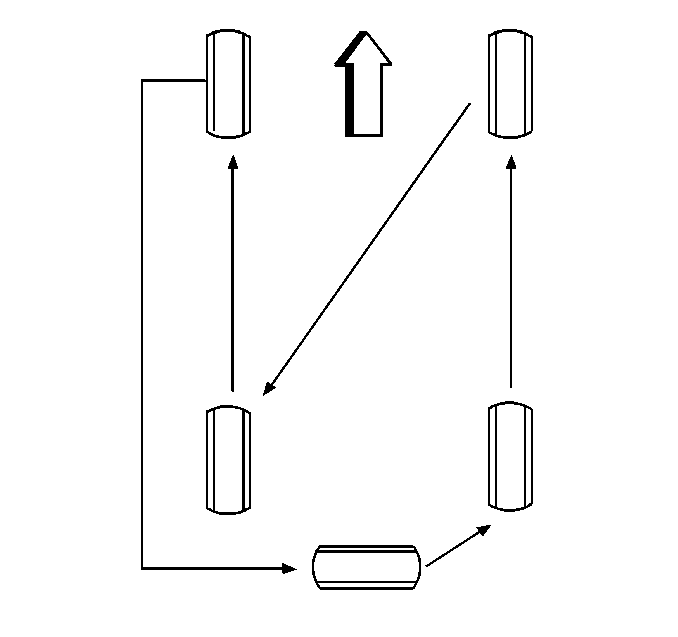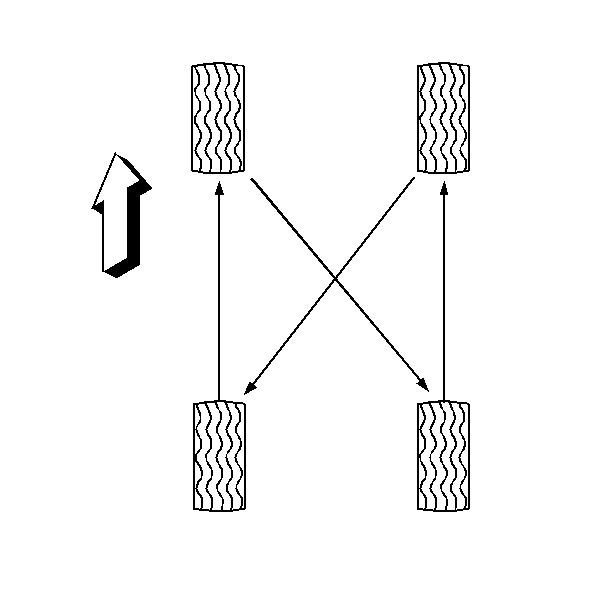| • | Rotate the tires and wheels at frequent intervals in order to
equalize wear. |
| • | In addition to the scheduled rotation, rotate the tires and wheels
whenever you notice uneven tire wear. |
| • | Radial tires tend to wear faster in the shoulder area, particularly
in front positions. Radial tires in non-drive locations may develop an irregular
wear pattern that may increase tire noise. This makes regular rotation
especially necessary. |
| • | If the spare wheel design and construction matches the other wheels
on the vehicle, use the 5 wheel and tire rotation pattern. |

| • | If the spare wheel design
and construction does not match the other wheels on the vehicle, use the 4 wheel
and tire rotation pattern. |

Notice: Use the correct fastener in the correct location. Replacement fasteners
must be the correct part number for that application. Fasteners requiring
replacement or fasteners requiring the use of thread locking compound or sealant
are identified in the service procedure. Do not use paints, lubricants, or
corrosion inhibitors on fasteners or fastener joint surfaces unless specified.
These coatings affect fastener torque and joint clamping force and may damage
the fastener. Use the correct tightening sequence and specifications when
installing fasteners in order to avoid damage to parts and systems.
| • | After rotation,
inspect the following: |
Tighten
Tighten the wheel nuts to 95 N·m (69 lb ft).
| - | The tire pressure-- Refer to the tire placard
on the driver's door lock pillar. |


